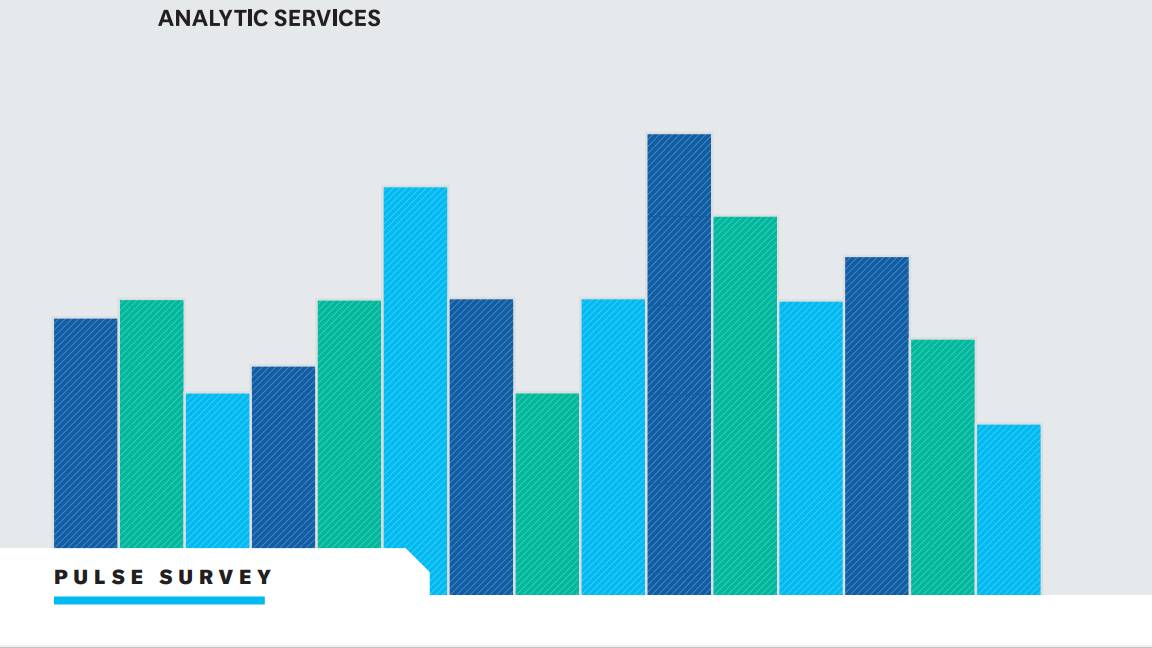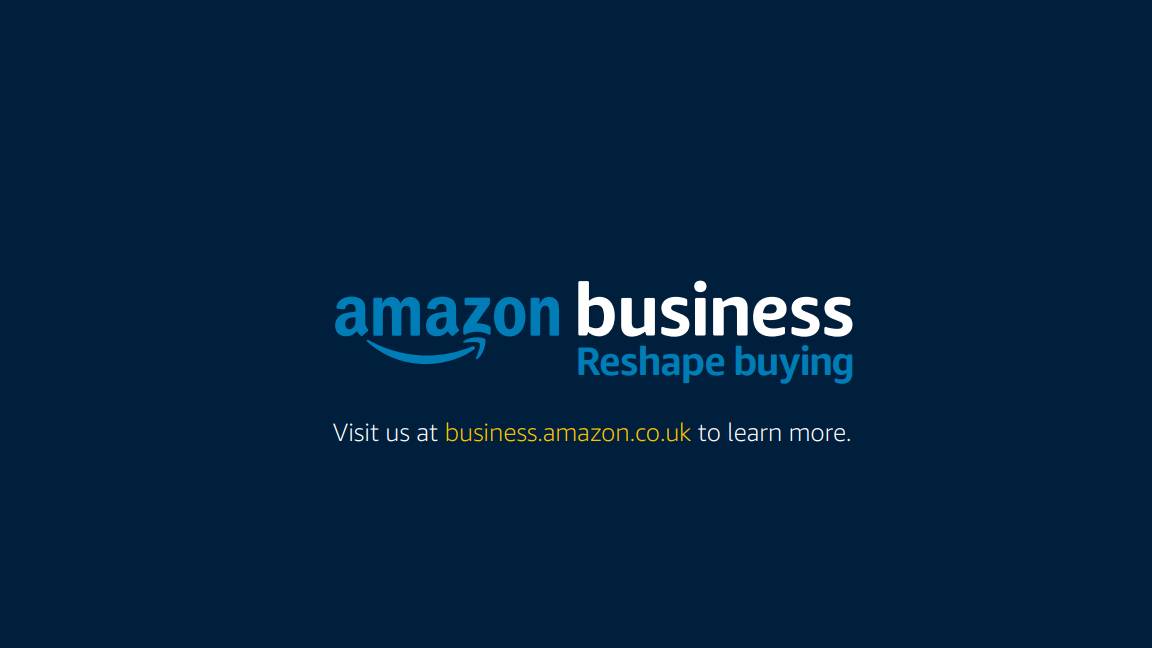How to grow your business potential while shrinking your procurement expenditure
Difficult economic environments have forced many businesses to streamline expenditure, and place greater importance on ROI – but limiting expenditure does not have to mean limiting ambition

From sole-traders to the largest corporations, effective procurement is a fundamental component of every successful business. Whether it’s cleaning supplies or IT equipment, organizations are on a perpetual journey to find the tools they need to deliver on core objectives in a way that can scale as they grow.
While businesses have certainly placed greater importance on maintaining healthy procurement budgets in recent years, economic conditions have made this challenging. In many cases, rising prices have outpaced procurement budgets, with as many as 29% of businesses now citing rising costs across the supply chain as a major risk, according to Amazon Business’ State of Procurement 2024 report.
This has created enormous demand for modern systems and processes that are able to get the most out of a business’ supply chain – to manage supplier lists, their prices, reduce inefficiencies, and better understand buyer behavior. Companies have found they’re able to absorb these rising supplier costs with smarter investments, but how are they achieving this?
The power of AI
AI has proven a game-changer for many areas of business, although uptake differs markedly between industry verticals.
Research from Amazon Business has found that some industries are more comfortable engaging with the technology than others. Over half (52%) of those in the technology sector are already embracing AI, followed by telecommunications (51%) and pharmaceuticals (49%). By contrast, heavily-regulated verticals such as government services (39%) and healthcare (38%) were some of those least-likely to embrace AI.
Procurement is better placed than most to take advantage of the advanced analytical capabilities that AI provides. Teams already deal with vast quantities of data, from people and product details, to suppliers and pricing, all of which is connected in an end-to-end workflow. In each step of the procurement process, AI has a place, whether that’s finding new suppliers, managing contracts, or even predicting market trends.
AI is particularly good at giving businesses greater visibility and control over their supply chains. Tracking the movement of products, monitoring communications, managing inventories, and visualizing disruption is all done in real-time. AI is then able to make decisions off the back of this data, such as adjusting inventory or delivery rules to respond to fluctuating demand.
Beyond simple automation, businesses are also finding that AI is incredibly powerful when it comes to data-intensive tasks, such as supply chain analysis. The technology is able to build a nuanced understanding of your suppliers and their habits by drawing on a vast array of data sets, creating an accurate picture of what is happening across your network in real time.
RELATED WHITEPAPER

Let’s use the example of a product shortage. Through techniques like pattern recognition and trend analysis, AI can detect shortages in products far earlier than would be otherwise possible. If a shortage is detected, a variety of alternative product sources will be suggested based on the reliability of their supplier. Predictive analysis takes this a step further, allowing teams to set proactive buying policies for products that either regularly go out of stock, or are most susceptible to disruption. It’s this sort of dynamic analysis that’s proving critical for businesses with complex logistical networks, where even the smallest efficiencies can create enormous cost savings.
It’s important to remember there’s no silver bullet for transforming procurement in this way, however; using technology like AI requires constant maintenance to ensure systems are aligned with business goals. Accurate training data is critical for building effective AI, and feeding poor quality data into a model will inevitably produce blind spots across your network. This in turn will undermine your digital transformation efforts.
Auditing through e-procurement
E-procurement has become one of the most effective ways of modernizing the management of purchasing and supply chains. E-procurement platforms allow businesses to ditch most manual tasks in the procurement process, whether that’s managing contracts, supplier evaluations, or dealing with purchase orders.
Compared to AI, the technology is arguably more accessible to those businesses looking to digitally transform their operations with little risk, although there are still plenty of opportunities for automation. This allows businesses to scrap manual data entry almost entirely, improving efficiency across a network.
However, where e-procurement really shines with saving businesses money is in its auditing tools. Modern systems are designed to log every single interaction between your business and your suppliers. You can gain visibility over who did what and when, allowing you to identify erroneous orders or repeat purchases that you no longer require.
It’s also far easier to manage ‘maverick’ spending, which often occurs when a lack of effective oversight allows staff members to make purchases outside of approved supplier lists or negotiated terms. Maintaining a robust, automated audit trail is an effective way to spot and deter this type of behavior.
Managing data effectively
Effective procurement relies on data transparency and visibility, and the ability to share this information throughout an organization. The most capable procurement systems include tools that make purchasing easier, cheaper, more efficient, and less wasteful.
Most systems employ some form of visibility tool. These typically make it easier for employees to locate and scrutinize the data they need, and simplify the process of sharing this data with others in an organization. For example, Amazon Business provides Spend Visibility, a suite of capabilities that allows users to build custom reports and dashboards, build in KPIs, and assign teams of collaborators if required. These can then be quickly replicated in the future to reduce the time it takes to make decisions.
Data fragmentation is another issue many businesses encounter when trying to modernize. Without a centralized system, it’s easy for data to end up siloed and scattered across a variety of databases and endpoints, making it difficult to locate. To make things worse, it’s common for information to be held in different formats, for there to be inconsistencies in metadata, or even for data to go missing entirely. It’s no wonder, then, that modern systems have developed robust tools for consolidating data, including the use of third-party integrations.
For example, Amazon Business allows for full integration across a number of common third-party platforms, including Quickbooks, Emburse, Zoho Expense, and SAP Concur. This type of cohesive integration is critical for uncovering valuable insights across your existing data, as well as highlighting potential cost savings.
Although it’s impossible to neutralize every risk, modern systems make it possible for businesses to flourish regardless of market challenges. However, there’s no one-size-fits-all solution, and so for a solid return on investment it’s essential that businesses choose a platform that fits their core objectives.
Sign up today and you will receive a free copy of our Future Focus 2025 report - the leading guidance on AI, cybersecurity and other IT challenges as per 700+ senior executives
ITPro is a global business technology website providing the latest news, analysis, and business insight for IT decision-makers. Whether it's cyber security, cloud computing, IT infrastructure, or business strategy, we aim to equip leaders with the data they need to make informed IT investments.
For regular updates delivered to your inbox and social feeds, be sure to sign up to our daily newsletter and follow on us LinkedIn and Twitter.
-
 The global server market is booming
The global server market is boomingNews Surging infrastructure investment and demand for embedded GPU hardware are fueling huge growth
-
 HackerOne eyes enterprise growth with double C-suite appointment
HackerOne eyes enterprise growth with double C-suite appointmentNews Seasoned industry executives Stephanie Furfaro and Stacy Leidwinger have joined the cyber security vendor’s executive team
-
 2024 State of procurement report
2024 State of procurement reportWhitepaper The trends shaping the future of business buying
-
 Digital optimisation paves the way to strategic supplier management
Digital optimisation paves the way to strategic supplier managementWhitepaper Procurement’s role as a strategic driver
-
 The skills every business needs to make digital procurement work
The skills every business needs to make digital procurement workAdvertorial As supply lines become more complex and new technologies are incorporated into workflows, having skilled and experienced employees is more important than ever
-
 The small and medium business guide to buying
The small and medium business guide to buyingWhitepaper Optimising purchasing to save in 2024
-
 Move your organisation forward by refining your strategic procurement plans
Move your organisation forward by refining your strategic procurement plansWhitepaper An Executive’s Guide to Purchasing in 2024

